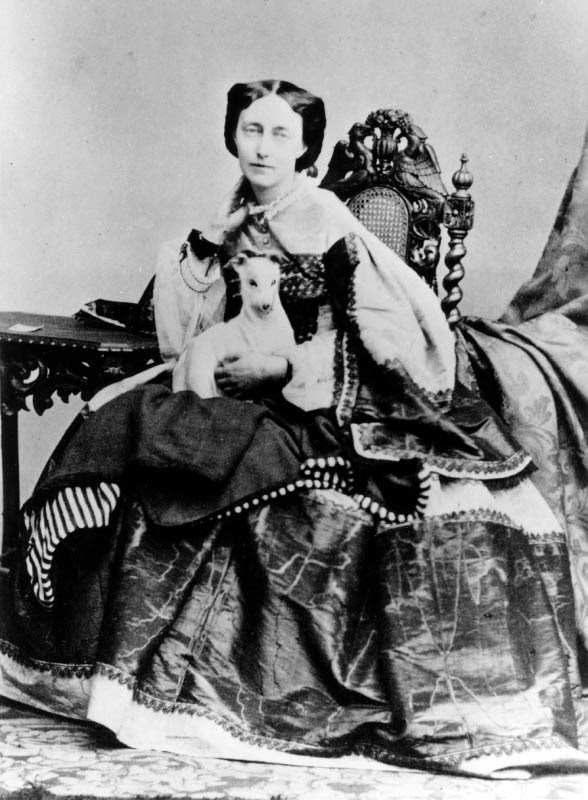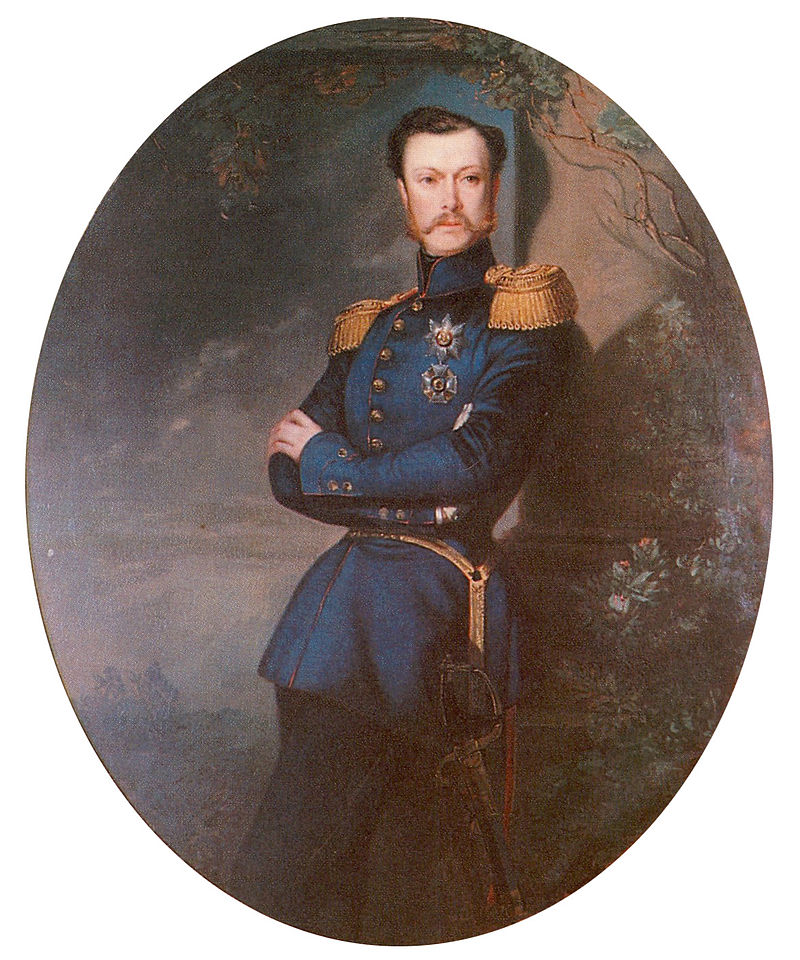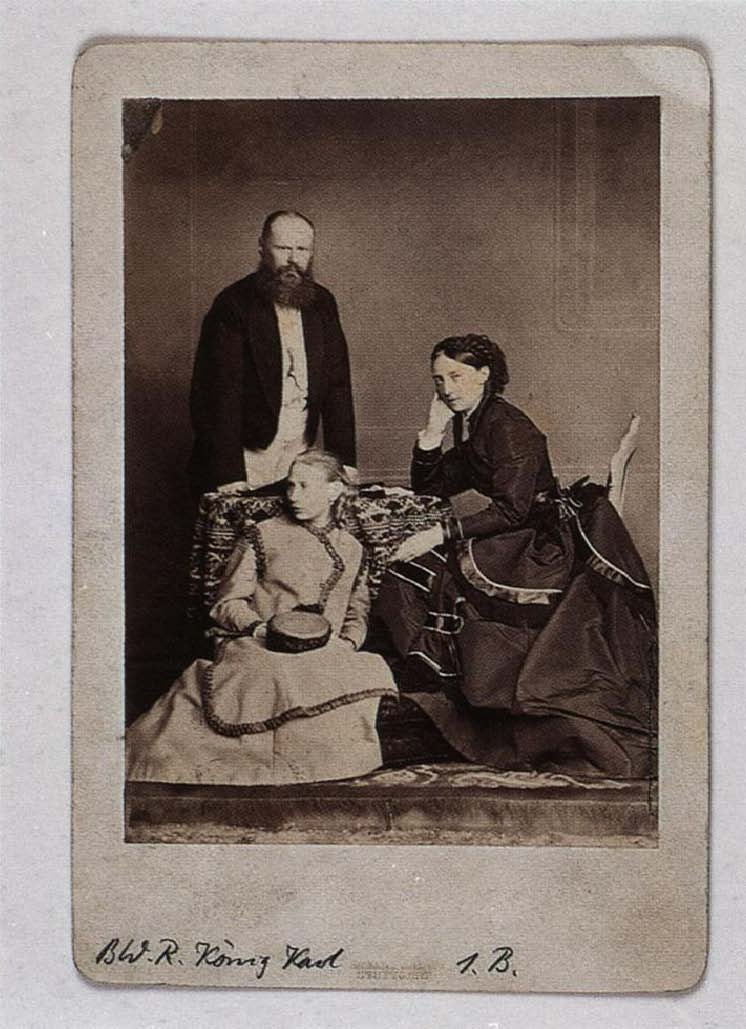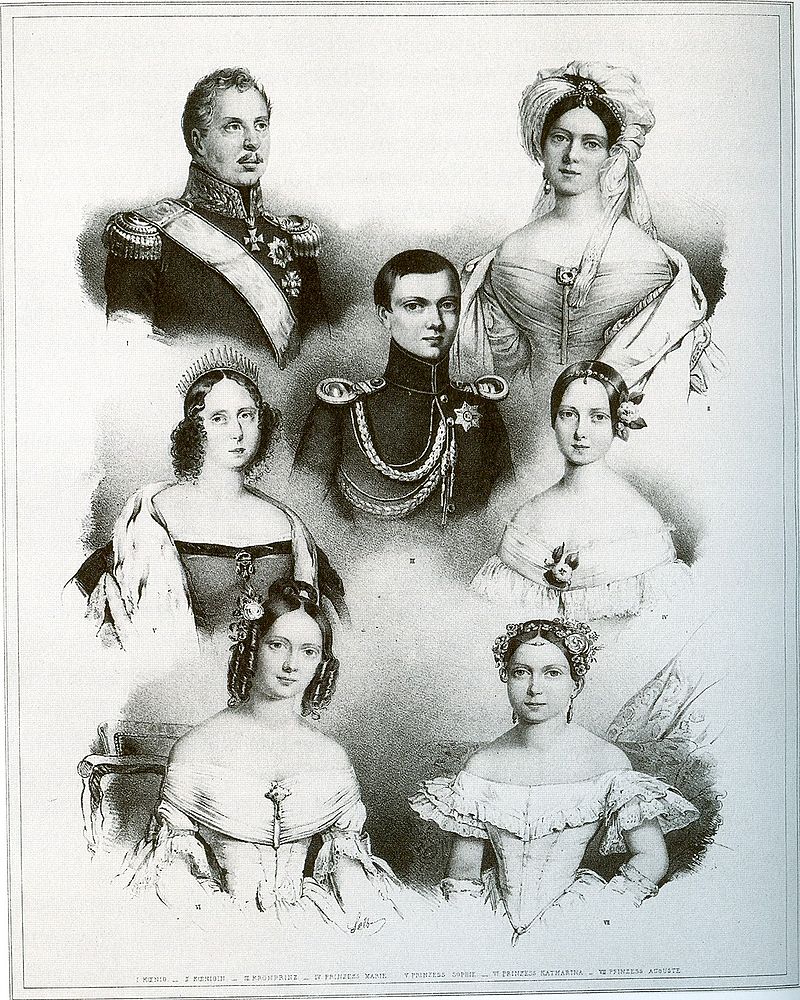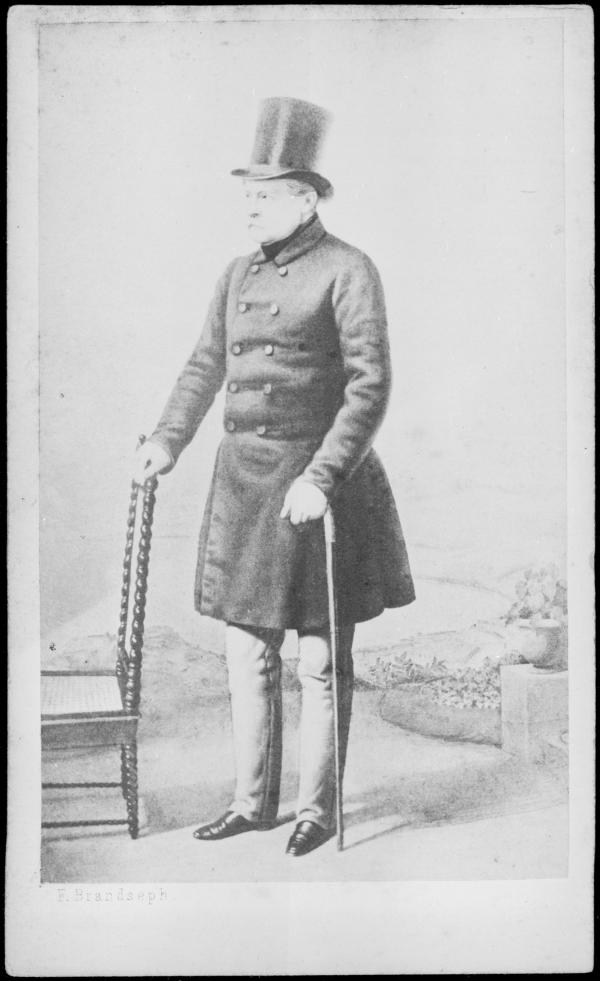by Susan Flantzer © Unofficial Royalty 2016

Charlotte, Princess Royal, Queen of Württemberg; Credit – Wikipedia
The eldest daughter and the fourth of the fifteen children of King George III of the United Kingdom and Charlotte of Mecklenburg-Strelitz, Charlotte, Princess Royal, was born at The Queen’s House (now known as Buckingham Palace) in London, England on September 29, 1766. She was christened Charlotte Augusta Matilda on October 27, 1766, at St. James’s Palace in London by Thomas Secker, Archbishop of Canterbury. Her godparents were:

Queen Charlotte with Charlotte, Princess Royal; Credit – Royal Collection Trust/© Her Majesty Queen Elizabeth II 2016
Charlotte had fourteen siblings:
- King George IV (1762 – 1830), married Caroline of Brunswick-Wolfenbüttel, had issue: Princess Charlotte of Wales who died in childbirth as did her child
- Prince Frederick, Duke of York (1763 – 1827), married Frederica of Prussia, no issue
- King William IV (1765 – 1837), married Adelaide of Saxe-Meiningen, no surviving legitimate issue, has illegitimate descendants
- Prince Edward, Duke of Kent (1767 – 1820), married Victoria of Saxe-Coburg-Saalfeld, had issue: Queen Victoria, present British Royal Family are his descendants
- Princess Augusta Sophia (1768 – 1840), never married, no issue
- Princess Elizabeth (1770 – 1840), married Friedrich, Landgrave of Hesse-Homburg, no issue
- King Ernest Augustus I of Hanover, Duke of Cumberland (1771 – 1851), married Friederike of Mecklenburg-Strelitz; had issue
- Prince Augustus Frederick, Duke of Sussex (1773 – 1843), married twice, both in contravention of the Royal Marriages Act of 1772 1) Lady Augusta Murray, had issue, marriage annulled 2) Lady Cecilia Buggin (later 1st Duchess of Inverness), no issue
- Prince Adolphus, Duke of Cambridge (1774 – 1850), married Augusta of Hesse-Kassel, had issue, present British Royal Family are his descendants through his granddaughter Mary of Teck who married King George V of the United Kingdom
- Princess Mary (1776 – 1857), married Prince William Frederick, Duke of Gloucester, no issue
- Princess Sophia (1777 – 1848), never married, possible illegitimate issue
- Prince Octavius (1779 – 1783), died in childhood
- Prince Alfred (1780 – 1782), died in childhood
- Princess Amelia (1783 – 1810), never married, no issue

Queen Charlotte painted by Benjamin West in 1779 with her 13 eldest children; Credit – http://www.royalcollection.org.uk
Charlotte and her sisters were raised by their governess Lady Charlotte Finch who served the Royal Family for over 30 years. Lady Charlotte supervised the royal nursery and was responsible for the princes’ education until they lived in their own households. She was responsible for the princesses until they turned 21. Charlotte and her sisters studied geography, English, grammar, music, needlework, dancing, and art. They were taught French by a tutor, Julie Krohme. The princesses had art lessons from famous artists Thomas Gainsborough and Benjamin West. Charlotte had an excellent memory, loved history, and had a talent for languages. On June 22, 1789, Charlotte was created Princess Royal, the third to bear the title reserved for the monarch’s eldest daughter, but the style had been used since Charlotte’s birth.

The Three Eldest Princesses, Charlotte, Princess Royal, Augusta and Elizabeth by Thomas Gainsborough 1784; Credit – Wikipedia
Charlotte’s childhood was very sheltered and she spent most of her time with her parents and sisters. The living conditions of King George’s daughters came to be known as “the Nunnery.” None of the daughters were allowed to marry at the age when most princesses would marry. Perhaps this over-protection of King George III’s daughters was due to what happened to his sister Caroline Matilda when she married King Christian VII of Denmark. Christian’s mental illness led to Caroline Matilda having an affair, being caught, the execution of her lover, her exile, and her early death from scarlet fever at age 23. The story was told in several novels including Per Olov Enquist’s The Visit of the Royal Physician (1999) and in the Danish film A Royal Affair (2012). Stella Tillyard also covers Caroline Matilda’s affair in her nonfiction book A Royal Affair: George III and His Scandalous Siblings (2006). Despite what happened to their aunt, the sisters longed to escape from “the Nunnery.”

Charlotte’s unfortunate aunt Caroline Matilda; Credit – Wikipedia
Before King George’s first bout with what may have been porphyria in 1788, he had told his daughters that he would take them to Hanover and find husbands for them. Further bouts occurred in 1801 and 1804 and prevented talk of marriage for his daughters. Queen Charlotte feared that the subject of marriage, which had always bothered her husband, would push him back into insanity. She was stressed by her husband’s illness and wanted her daughters to remain close to her. The sisters – Charlotte, Augusta, Elizabeth, Mary, Sophia, and Amelia – continued to be over-protected and isolated which restricted them from meeting eligible suitors of their own age.
Starved for male companionship, Sophia got pregnant by her father’s 56-year-old equerry and secretly gave birth to a boy who was placed in a foster home. Amelia had an affair with another equerry. There have been suggestions that both Elizabeth and Augusta also had affairs. Three of the six daughters would eventually marry, all later than was the norm for the time. Mary married her cousin Prince William Frederick, Duke of Gloucester at the age of 40 and had no children. Elizabeth was the last daughter to finally escape from “the Nunnery” when she married Friedrich VI, Landgrave of Hesse-Homburg when she was 48. But Charlotte, Princess Royal escaped “the Nunnery” first.
Charlotte was the least attractive of the daughters, but she was the eldest daughter of a king and that held some weight in the marriage market. In 1795, the Prince of Wales tried to help Charlotte by asking their maternal uncle Prince Ernst of Mecklenburg-Strelitz to help arrange a marriage between Charlotte and the Duke of Oldenburg. Charlotte was delighted and her sister Elizabeth started to refer to Charlotte as the Duchess of Oldenburg in letters, but nothing ever came of the proposed match.
Finally, a possible husband was found for Charlotte. Friedrich, Hereditary Prince of Württemberg was the eldest son and heir of Friedrich II Eugene, Duke of Württemberg and Friederike of Brandenburg-Schwedt. Friedrich, eight years older than Charlotte, was a huge man: 2.11 m (6 ft 11 in) and about 200 kg (440 lb). He was also a widower with three children. His first wife had been Augusta of Brunswick-Wolfenbüttel, niece of King George III and some issues with this marriage concerned King George. Only after persistent requests and pleadings from Russian and Brunswick royals and British officials did the king consent to the marriage.
The marriage treaty had some interesting clauses. Any children from the marriage were to be brought up in Württemberg. The children could not marry without the consent of the sovereign of the United Kingdom. If Charlotte’s husband predeceased her, she could return to the United Kingdom with all her jewelry, including jewelry obtained during the marriage. Charlotte would be free to worship using the Church of England rites. Charlotte and Friedrich were married at St. James Palace in London on May 18, 1797. The bride wore a dress of white satin with a crimson velvet train with fur trimming. The groom wore a silk suit embroidered in gold and silver with German and Russian insignia.

The Marriage of his Serene Highness the Prince of Württemberg, to the Princess Royal of England published by Robert Laurie, published by James Whittle, mezzotint, published 7 August 1797 NPG D8015 © National Portrait Gallery, London
By August 1797, Charlotte was pregnant. Friedrich became the reigning Duke of Württemberg in December of 1797 upon the death of his father. On April 27, 1798, Charlotte delivered a stillborn daughter. At first, she was not told of her child’s death because her labor had been difficult and she had developed a fever after the delivery. Charlotte and Friedrich’s marriage remained childless.
Despite having a domineering husband, Charlotte respected and admired him. She was pious and warm-hearted, stayed out of politics, and concentrated on household and family. Charlotte was a loving stepmother to the children from Friedrich’s first marriage. She was especially close to her stepdaughter Princess Catharina of Württemberg whose education she took over.
Charlotte’s stepchildren, from Friedrich’s first marriage to Augusta of Brunswick-Wolfenbüttel:
- King Wilhelm I of Württemberg (1781–1864), married (1) Caroline Augusta of Bavaria, divorced, no issue (2) Catherine Pavlovna of Russia, had two daughters including Sophie, Queen of the Netherlands (3) Pauline of Württemberg, had issue
- Princess Catharina of Württemberg (1783–1835), married Jérôme Bonaparte, King of Westphalia, youngest brother of Napoleon I, had issue
- Prince Paul of Württemberg (1785–1852), married (1) Charlotte of Saxe-Hildburghausen, had issue (2) Magdalena Fausta Angela de Creus, no issue

Ludwigsburg Palace in Ludwigburg, Germany, Friedrich and Charlotte’s home; Wikipedia
Charlotte had loved art in childhood and continued with artistic pursuits as an adult. She painted and embroidered, and some of her paintings and embroidered upholstery can still be seen in Ludwigsburg Palace and in English castles and palaces as she sent some of her creations to her father.
In 1800, Napoleon‘s French troops invaded Württemberg, and Friedrich and Charlotte took refuge in Vienna. The following year Napoleon and Friedrich concluded a secret treaty with provisions that included a trade of land. Württemberg became a puppet state of Napoleon. In 1803, Friedrich became the Elector of Württemberg. In 1805, in exchange for providing France with military aid, Napoleon recognized Friedrich as King of Württemberg. Friedrich and Charlotte were crowned King and Queen of Württemberg in Stuttgart on January 1, 1806. Friedrich’s alliance with France turned him into the enemy of his father-in-law King George III. George III was Infuriated by what he considered a betrayal and refused to call his daughter Queen of Württemberg.

Coronation Portrait of King Friedrich I of Württemberg; Credit – Wikipedia
In 1813, King Friedrich changed sides and went over again to the British side. After Napoleon’s fall, Friedrich attended the Congress of Vienna (1814-1815), whose goal was to provide a long-term peace plan for Europe by settling critical issues arising from the French Revolutionary Wars and the Napoleonic Wars. At the Congress of Vienna, Friedrich was confirmed as King of Württemberg. Shortly thereafter, Friedrich died of pneumonia on October 30, 1816, at Ludwigsburg Palace in Stuttgart, Kingdom of Württemberg, now in the German state of Baden-Württemberg, at the age of 61, and was buried in the Royal Crypt in the Castle Chapel at Ludwigsburg Palace. Friedrich’s son from his first marriage succeeded him as King Wilhelm I of Württemberg.
As Queen Dowager, Charlotte continued to live in Ludwigsburg Palace. She was always pleased to have visits from any of her siblings. In 1819, Charlotte was godmother by proxy of her niece, the future Queen Victoria of the United Kingdom. In 1827, Charlotte returned to England for the first time since their wedding in 1797, for the treatment of pulmonary edema, called dropsy at that time. She enjoyed returning to her home country and seeing her relatives, especially her goddaughter Princess Victoria. Forty-five years later, Queen Victoria recalled meeting her aunt: “She had adopted all the German fashions and spoke broken English – and had not been in England for many years. She was very kind and good-humored but very large and unwieldy.”

Charlotte Augusta Matilda, Princess Royal by William Skelton, after Johann Paul Georg Fischer, line engraving, published 1828 NPG D10839 © National Portrait Gallery, London
Soon after her return to Württemberg, Charlotte fell ill. Visits from her brother Adolphus and her sister Elizabeth lifted her spirits but it was evident that she was dying. On October 5, 1828, Charlotte asked that her stepson King Wilhelm I of Württemberg and his family come to her bedside. The next day, Charlotte died peacefully in the arms of her stepson surrounded by his family, her friends, and her faithful servants. She was buried next to her husband in the Royal Crypt in the Palace Chapel at Ludwigsburg Palace in Ludwigsburg, Kingdom of Württemberg, now in the German state of Baden-Württemberg.
This article is the intellectual property of Unofficial Royalty and is NOT TO BE COPIED, EDITED, OR POSTED IN ANY FORM ON ANOTHER WEBSITE under any circumstances. It is permissible to use a link that directs to Unofficial Royalty.
Württemberg Resources at Unofficial Royalty
Recommended books that deal with Charlotte, Princess Royal, Queen of Württemberg
George III’s Children by John Van Der Kiste (1992)
The Georgian Princesses by John Van Der Kiste (2000)
Princesses: The Six Daughters of George III by Flora Fraser (2004)
